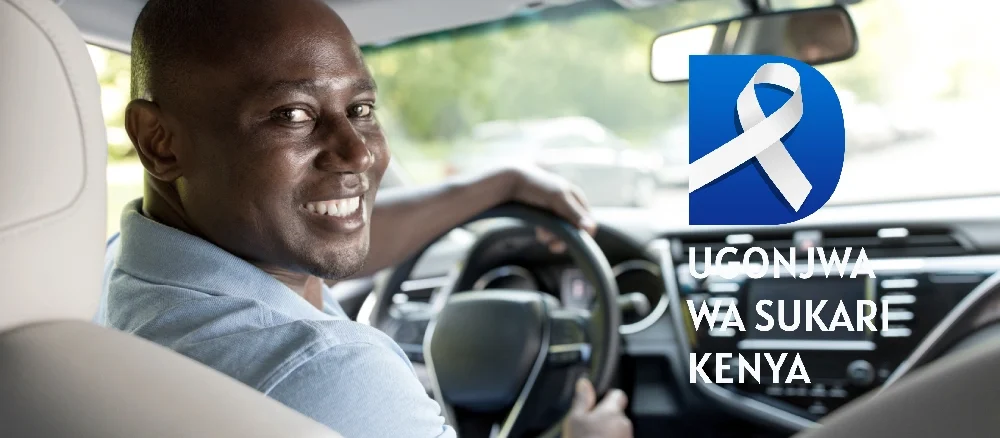- September 17, 2024
- Diabetes Kenya
- Comment: 0
- Life With Diabetes
Driving and Diabetes in Kenya
For most people with diabetes, driving isn’t a problem, and they can hold a driving licence and continue driving safely. This guide covers everything you need to know about diabetes and driving in Kenya.
How Diabetes Can Affect Driving
Diabetes can affect your ability to drive safely in two main ways:

Hypoglycemia (hypos)
If you treat your diabetes with insulin or medications like sulphonylureas, you may be at risk of having hypos, where your blood sugar drops below 4mmol/L. Severe hypos can impair your ability to drive safely.

Diabetes complications
Conditions such as retinopathy (eye complications) or neuropathy (nerve damage) may affect your driving ability.
If either of these affects you, it’s important to understand the rules for driving in Kenya and know what you must report to the National Transport and Safety Authority (NTSA).
Driving and Diabetes Treatment
Whether or not you can continue driving depends on how you treat your diabetes and if you’re at risk of hypos. Medications that cause hypos can affect your driving safety. Speak to your healthcare team if you’re unsure whether you’re at risk and how to prevent them.
Regardless of how you treat your diabetes, follow the safety checklist every time you drive.
Driving with Diabetes – Key Considerations
Driving with Eye Complications
Retinopathy is damage to the retina due to high blood sugar and blood pressure. If your vision is affected, you must notify the NTSA, and you may require a special eye test for driving.
Other Diabetes Complications
Neuropathy can affect sensation in your hands or feet, making driving more challenging. If you require an adapted vehicle, you will need to apply for an adapted vehicle licence. Heart complications or conditions like sleep apnea can also impact your ability to drive safely and may require NTSA notification.
Diabetes Driving Checklist
Follow this checklist every time you drive:
- Know the symptoms of a hypo and avoid driving if you’ve lost hypo awareness.
- Keep spare test strips and a meter in the car, even if you use a CGM.
- Check your blood sugar before driving. Your levels should be at least 5mmol/L.
- If your blood sugar is under 4mmol/L, treat the hypo before driving.
- Always have hypo treatments within easy reach in the car.
- Take breaks during long journeys and avoid delaying meals or snacks.
If you have frequent hypos, discuss your driving ability with your healthcare team.

Pull over
to a safe location.

Switch off the engine
and remove the keys.

Take fast-acting carbs,
like glucose tablets, and follow up with longer-acting carbohydrates (e.g., crackers).

Wait 45 minutes
after your blood sugar returns to 5mmol/L or above before driving again.
Diabetes and Car Insurance in Kenya
In Kenya, car insurance companies should not charge higher premiums solely because you have diabetes. However, you must declare diabetes as a material fact when applying for insurance. If an insurer increases your premium because of your condition, it’s advisable to seek alternative insurance providers.
Driving for Work with Diabetes
If your job involves driving or you use a vehicle to get to work, having diabetes may raise concerns about your driving licence. However, most people with diabetes can drive without issues if they manage their condition well.
If you experience changes to your licence due to diabetes-related conditions, consult the NTSA and discuss your options with your employer. You have legal rights that protect you from discrimination.
